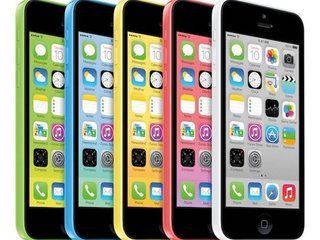DUOS expands AI capabilities to help seniors apply for assistance programs
It will complete and submit forms, and integrate with state benefit systems
Read more...
As many of the established markets are being tapped out and companies are facing down fierce competition in the effort to shine the brightest, many are making the leap to emerging markets to nurture their growth. Rocket Internet has skipped over established markets altogether to take advantage of growing tech use in the Middle East, Africa, and Asia.
Meanwhile, analysts have been saying for a while now that if Apple wants to keep up its growth trajectory, it needs to make a move into the emerging markets with a low-cost iPhone. But Apple just isn’t ready to do that, so the iPhone 5C hasn’t been doing so hot.
But it makes you wonder, how smart is it to move business to a country with a relatively high poverty rate? As it turns out, tech use is growing in many developing countries, particularly among younger demographics. A Pew study released Thursday reveals what kinds of technology are currently in use in emerging markets and how people are using it.
At this point, cell phones are nearly ubiquitous in emerging markets. In China, Jordan, Chile, Russia, and South Africa, more than 90% of the population owns a cell phone. In Kenya, Senegal, Bolivia, Venezuela, Argentina, Turkey, and Egypt, more than 80% of the adult population owns a cell phone.
Meanwhile, smartphones are harder to come by. In China, while 95% of the population owns a cell phone, only 37% of those own a smartphone, despite the fact that China has more Internet users than any other country in the world (over 500 million at last count). In Pakistan, only 53% of the population owns a cell phone, and of those, a paltry 3% are smartphone owners. Interestingly, in Lebanon, only 86% own cell phones, but of those, a full 45% are smartphones, which means 57% of all cell phones in Lebanon are smartphones.
What people are doing with their cell phones varies by country as well. For example, mobile payments are particularly popular in many African countries. In Kenya, fully 68% of cell phone owners say they use their cell phones to make or receive payments. That’s compared to 50% in Uganda, 29% in South Africa, and 24% in Sengal. In the rest of the emerging markets, however, the median hovers at 8%.
While texting remains the most popular activity on cell phones, Venezuelans, Chileans, and South Africans are more likely than people in other countries to take pictures and shoot video with their cell phones. Meanwhile, Venezuelans, Chinese, and Nigerians are more likely to use their cell phones to get political news and information.
Chileans, Venezuelans, and Lebanese are more likely to use their cell phones for social networking, while people in Russia are more likely to use their cell phones to get consumer information.
As in the rest of the world, technology use in emerging markets is more prevalent among younger people. In Tunisia, for example, 70% of citizens ages 18-29 access the Internet, compared to just 31% of those ages 30-49, and 12% of those 50 and over. In Pakistan, 18- to 29-year-olds are three times more likely than those ages 30-49 to access the Internet.
The same holds true for social networking, cell phone ownership, and smartphone ownership. In China, 69% of 18- to 29-year-olds own a smartphone, compared to 34% of 30- to 49-year-olds. In Russia, 46% of 18- to 29-year-olds own a smartphone, compared to 25% of those ages 30-49.
Image source: eftrends.com
It will complete and submit forms, and integrate with state benefit systems
Read more...The bill would require a report on how these industries use AI to valuate homes and underwrite loans
Read more...The artists wrote an open letter accusing OpenAI of misleading and using them
Read more...

